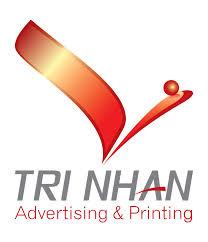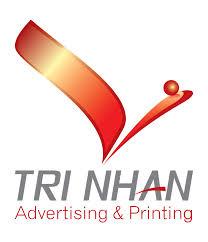The Hot Briquetted Iron Market Share is experiencing substantial growth as the global steel industry increasingly seeks high-purity and efficient raw materials. As Per Market Research Future, rising steel demand, stringent environmental regulations, and the need for cost-effective and sustainable iron feedstock are driving the adoption of hot briquetted iron (HBI) across integrated and electric arc furnace steelmaking processes.
Understanding Hot Briquetted Iron (HBI)
Hot Briquetted Iron is a form of direct reduced iron (DRI) that is compacted into dense briquettes. HBI offers advantages over traditional iron ores by providing high iron content, uniform size, and reduced moisture content. Its solid form improves storage, transportation, and handling efficiency, making it a preferred material in steel production.
HBI serves as an environmentally friendly alternative to scrap metal and pig iron, supporting cleaner steelmaking processes and reducing greenhouse gas emissions. It is particularly suitable for electric arc furnace (EAF) and blast furnace applications.
Steel Industry Applications
The steel industry is the primary driver of HBI demand. With growing urbanization, infrastructure development, and industrialization, global steel production continues to rise. HBI provides a consistent, high-quality iron source for steelmakers, improving productivity and operational efficiency.
In electric arc furnaces, HBI supplements or replaces scrap metal, enabling manufacturers to produce high-quality steel with reduced impurities. Its use ensures uniform chemical composition, enhanced tensile strength, and improved overall steel performance.
Environmental Benefits and Regulatory Drivers
Environmental concerns and stricter regulations are encouraging steelmakers to adopt HBI. Traditional steelmaking methods often involve higher emissions of CO₂ and other pollutants. HBI, being a clean and high-iron-content material, helps reduce emissions, energy consumption, and slag generation.
Governments and international bodies are increasingly promoting sustainable steel production, incentivizing the use of low-emission raw materials like HBI. Adoption of HBI aligns with corporate sustainability goals, regulatory compliance, and long-term operational cost savings.
Global Market Growth Factors
Several factors contribute to the growth of the hot briquetted iron market:
-
Rising Steel Demand: Industrial growth in emerging economies, construction booms, and infrastructure expansion drive the need for high-quality steel and, consequently, HBI.
-
Urbanization and Industrialization: Rapid urban development and industrial projects increase steel consumption, boosting HBI requirements for consistent iron feedstock.
-
Electric Arc Furnace Expansion: Increasing adoption of EAFs, especially in regions with limited scrap availability, creates higher demand for HBI.
Technological Advancements in HBI Production
Advances in production technologies, including direct reduction processes and briquetting methods, have improved HBI quality and output. Modern plants produce uniform, dense briquettes with high iron content, low moisture, and minimal impurities, enhancing steelmaking efficiency.
Automation and process optimization reduce production costs, improve yield, and ensure consistent quality. Some producers are integrating smart monitoring systems to track production parameters, energy usage, and emissions, further aligning with sustainable practices.
Economic and Operational Advantages
HBI offers several operational and economic advantages:
-
Efficient Storage and Transport: Its compact and dense form reduces transportation costs and simplifies storage compared to traditional DRI or iron ore.
-
High Purity and Consistency: Provides predictable chemical composition, minimizing impurities in steel and improving product quality.
-
Reduced Environmental Footprint: Lower emissions, energy savings, and decreased slag production make it an eco-friendly raw material choice.
These benefits make HBI attractive for steel manufacturers aiming to improve production efficiency, reduce costs, and meet environmental targets.
Market Challenges
Despite growth prospects, the HBI market faces challenges. High initial capital investment in production facilities and briquetting plants can be a barrier. Availability and cost of raw materials, such as natural gas for direct reduction, also impact production economics.
Transportation logistics for HBI, especially for international trade, may pose additional challenges due to weight, handling, and storage requirements. However, technological innovation and process optimization are helping overcome these limitations.
Opportunities and Emerging Trends
Opportunities in the HBI market include expansion in emerging economies, integration with renewable energy-powered steelmaking, and partnerships between HBI producers and steel manufacturers. Increasing investment in green steel production, including low-carbon EAF and DRI technologies, further enhances market prospects.
Emerging trends include production optimization, use of advanced sensors and automation, and expansion of HBI production capacity near key steelmaking hubs. These strategies help manufacturers meet rising demand, reduce costs, and ensure environmental compliance.
Market Outlook
The outlook for the hot briquetted iron market is highly positive. Rising steel consumption, environmental regulations, and the shift toward low-emission steelmaking processes are expected to drive sustained growth.
As the steel industry continues to evolve, HBI will play a pivotal role in improving efficiency, quality, and sustainability. Companies investing in advanced production technologies, logistical optimization, and strategic market expansion are well-positioned to capitalize on this growing sector.
FAQs
1. What is hot briquetted iron (HBI)?
HBI is a dense form of direct reduced iron, used in steel production for its high purity, uniform size, and reduced moisture content.
2. How is HBI used in steelmaking?
It is used in electric arc furnaces and blast furnaces to provide a consistent, high-quality iron feedstock, improving productivity and steel quality.
3. What are the advantages of using HBI?
HBI offers operational efficiency, reduced emissions, cost-effective storage and transport, high purity, and alignment with sustainable steelmaking practices.
More Related Reports:
Wind Turbine Operation And Maintenance Market


